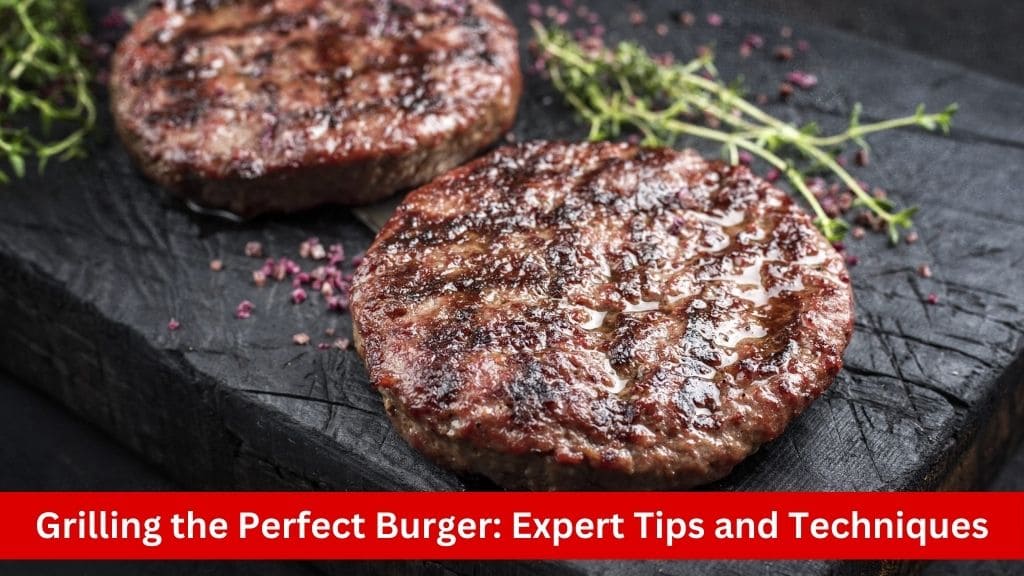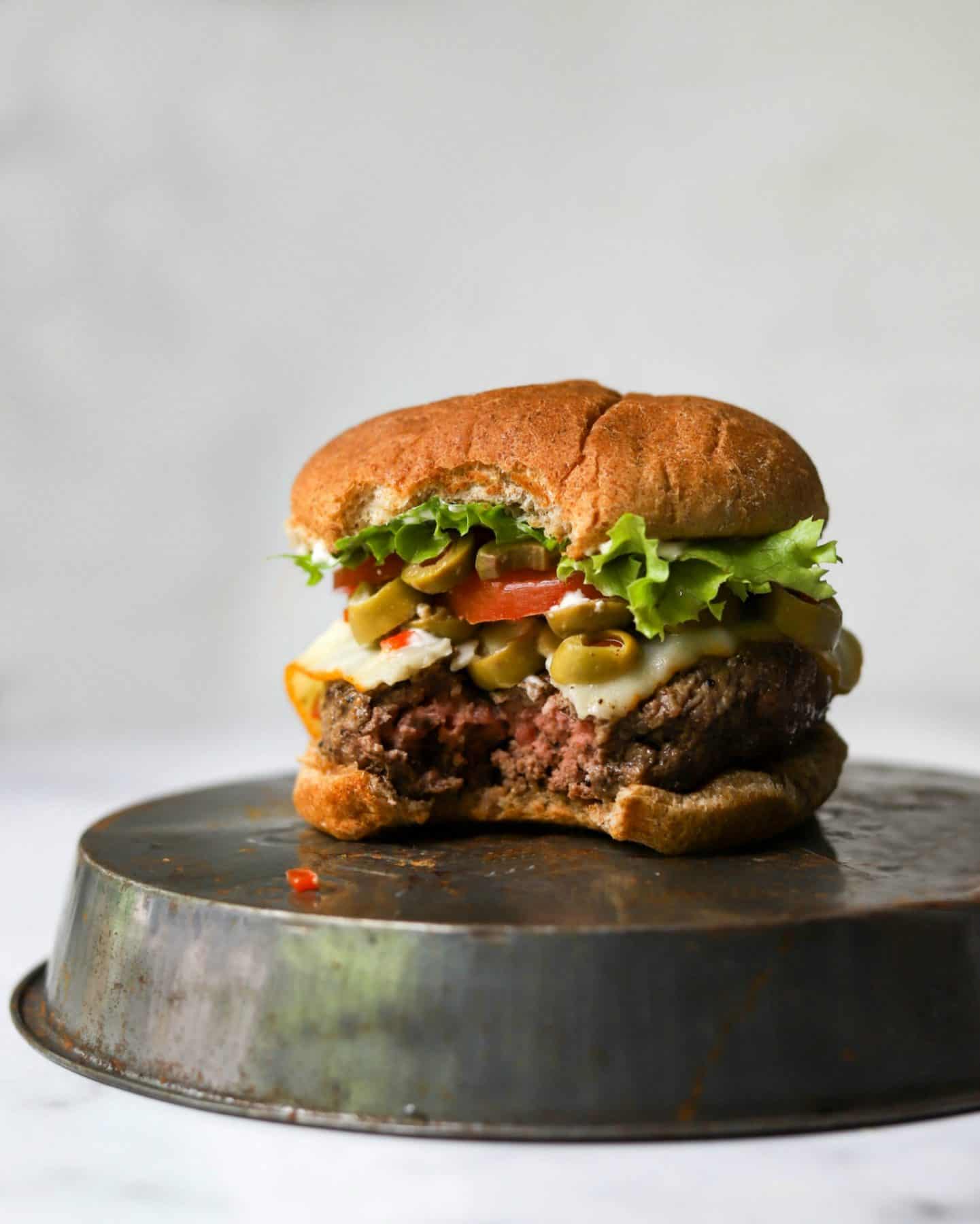Who doesn’t love sinking their teeth into a juicy, flavorful burger hot off the grill? Whether you’re firing up the barbecue for a summer cookout or craving a hearty meal any time of year, mastering the art of grilling burgers is a skill worth honing. In this comprehensive guide, we’ll take you through every step of the process, from selecting the best beef to choosing the perfect toppings. Get ready to elevate your burger game and impress your friends and family with your grill master prowess!
Grilling the perfect burger is more than just throwing some meat on the grill and hoping for the best. It’s about understanding the nuances of beef, mastering the art of seasoning, and knowing when to flip for that perfect sear. In this guide, we’ll delve deep into the techniques and tips that will take your burgers from ordinary to extraordinary.
Selecting the Right Beef

Preparing the Patties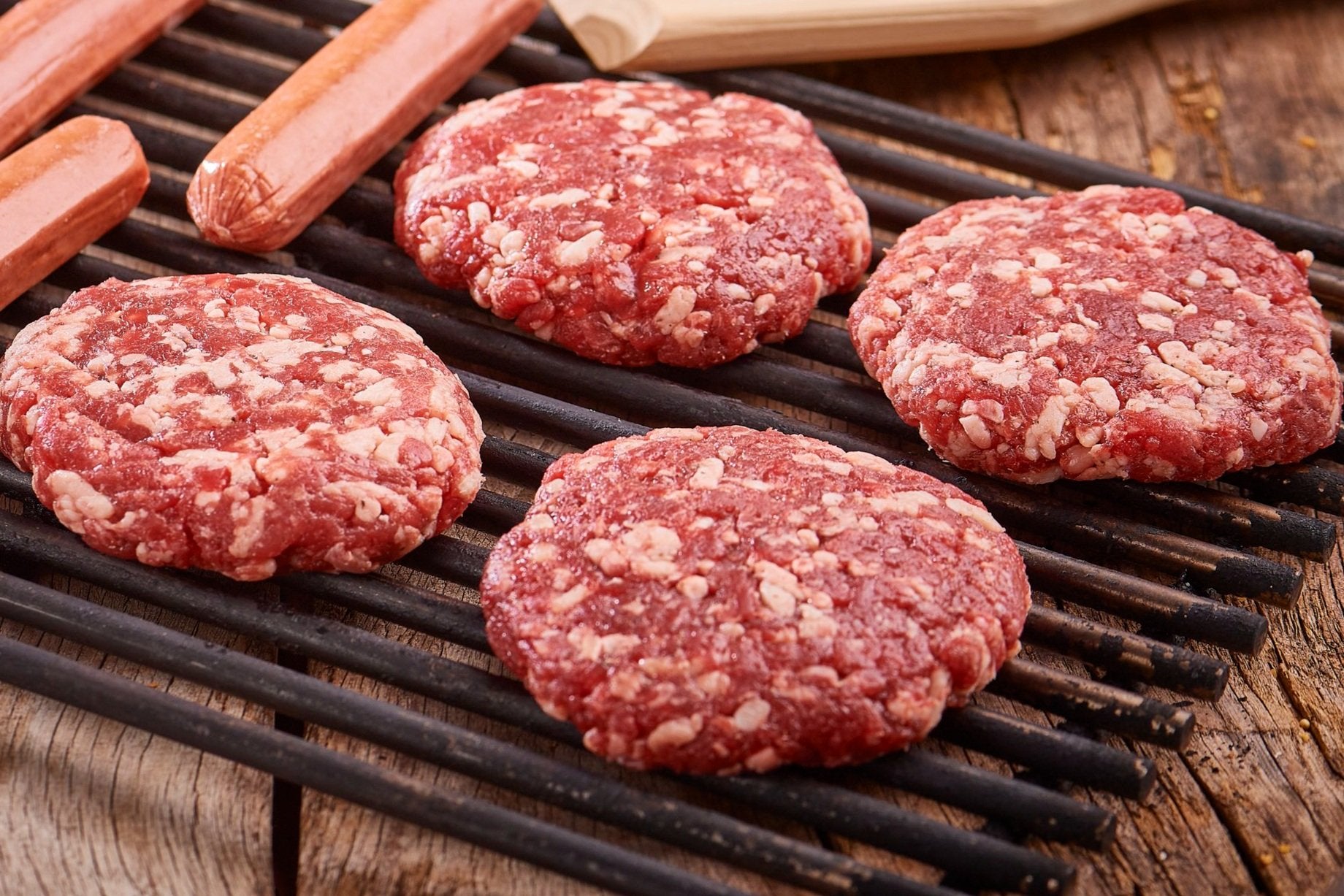
1. Chilling for Success:
Before shaping the patties, it’s crucial to chill the ground beef in the refrigerator. Chilling helps the meat hold its shape and prevents it from falling apart during grilling. It also allows the fat in the beef to firm up slightly, which contributes to a juicier burger. Aim to keep the ground beef refrigerated until you’re ready to form the patties to ensure optimal results.
2. Handling with Care:
When forming the patties, handle the meat gently to avoid overworking it. Overhandling can lead to tough and dense burgers. Use your hands to lightly shape the meat into uniform patties, being careful not to compact the meat too tightly. Aim for patties that are about 1-inch thick for even cooking and optimal juiciness.
3. Seasoning to Perfection:
Seasoning is key to enhancing the flavor of the patties. Start by generously seasoning both sides of the patties with kosher salt and freshly cracked black pepper. These simple seasonings help to bring out the natural flavors of the beef without overpowering it. You can also experiment with additional seasonings such as garlic powder, onion powder, or paprika to add depth of flavor to your burgers.
4. Adding Flavorful Fillings:
For an extra burst of flavor, consider incorporating ingredients directly into the patties. Mix-ins like diced onions, minced garlic, Worcestershire sauce, or grated cheese can take your burgers to the next level. Just be mindful not to overmix the meat, as this can lead to uneven texture and tough burgers. Gently fold in the fillings until evenly distributed throughout the meat.
5. Uniformity is Key:
To ensure even cooking, aim for uniformity in size and shape when forming the patties. This helps to promote consistent cooking times and prevents any parts of the burger from over or undercooking. Use a burger press or simply press down gently with your hands to shape the patties into rounds of the desired thickness. Creating uniform patties ensures that each bite is perfectly cooked and packed with flavor.
Grilling Techniques
:format(jpeg)/cdn.vox-cdn.com/uploads/chorus_image/image/47026684/20150408-burger_grill-2.0.0.jpg)
1. Preheating the Grill:
Before you start grilling, it’s essential to preheat your grill to the right temperature. Aim for a medium-high heat, typically around 350°F to 375°F, to ensure optimal cooking conditions. Preheating the grill helps to sear the burgers quickly, locking in moisture and flavor, while also creating those desirable grill marks.
2. Greasing the Grill:
To prevent the burgers from sticking to the grill grates, it’s important to grease the grill properly. Use a high-heat oil such as vegetable oil or grapeseed oil to lightly coat the grill grates before cooking. Additionally, brush a thin layer of oil directly onto the burgers themselves to further reduce the risk of sticking. Avoid using cooking spray, as it can cause flare-ups and impart unwanted flavors to the burgers.
3. Flipping Like a Pro:
Knowing when to flip your burgers is crucial for achieving that perfect sear and even cooking. Resist the temptation to flip the burgers too often, as this can disrupt the cooking process and lead to less-than-ideal results. Wait until you see a nice browned crust forming on the bottom before flipping the burgers. Typically, this takes about 3-4 minutes, depending on the thickness of the patties. Use a spatula to flip the burgers gently to avoid tearing or breaking them apart.
4. Checking for Doneness:
Determining when your burgers are cooked to perfection requires a bit of finesse. While some experienced grillers can gauge doneness by touch or visual cues alone, using a meat thermometer is the most reliable method. Insert the thermometer into the thickest part of the burger, aiming for an internal temperature of 160°F for well-done burgers. Avoid pressing down on the burgers with the thermometer, as this can cause them to lose valuable juices.
5. Resting for Juiciness:
Once the burgers reach the desired internal temperature, it’s essential to let them rest for a few minutes before serving. Resting allows the juices to redistribute throughout the meat, resulting in a juicier and more flavorful burger. Transfer the burgers to a clean plate and loosely tent them with foil to keep them warm while resting. Resist the urge to cut into the burgers immediately, as this will cause the juices to escape, leaving you with a drier burger.
Checking for Doneness
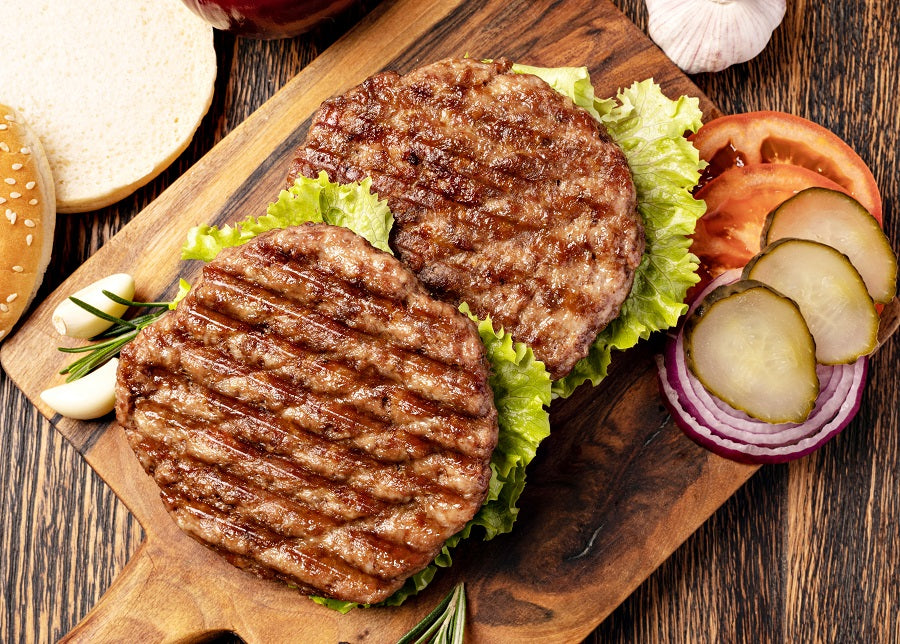
1. Importance of Temperature:
The internal temperature of the burger is the most reliable indicator of doneness. Ground beef, like all ground meats, should be cooked to a safe minimum internal temperature to kill any harmful bacteria. For burgers, the USDA recommends an internal temperature of 160°F (71°C) for well-done burgers.
2. Using a Meat Thermometer:
Investing in a good-quality meat thermometer is essential for ensuring that your burgers are cooked to the proper temperature. An instant-read thermometer is convenient and provides accurate results within seconds. Insert the thermometer probe into the thickest part of the burger, making sure to avoid contact with any bones or gristle.
3. Proper Placement:
When inserting the thermometer probe into the burger, aim for the center of the patty. This is the portion of the burger that takes the longest to cook and provides the most accurate representation of the overall temperature. Avoid touching the thermometer probe to the grill grates or any bone, as this can give false readings.
4. Waiting for Stability:
After inserting the thermometer probe into the burger, wait a few seconds for the temperature reading to stabilize. The temperature may fluctuate initially, but it should eventually settle on a consistent reading. Once the thermometer indicates that the internal temperature has reached 160°F, the burger is considered well-done and safe to eat.
5. Avoiding Cross-Contamination:
To prevent cross-contamination and ensure food safety, clean and sanitize your meat thermometer after each use. Wash the probe with hot, soapy water and sanitize it with a disinfectant solution or alcohol wipe. Store the thermometer in a clean, dry place between uses to prevent bacterial growth.
6. Visual Cues:
While using a meat thermometer is the most accurate method for checking for doneness, visual cues can also provide some indication of when the burgers are cooked. Look for burgers that are uniformly browned on the outside with no traces of pink in the center. However, keep in mind that color alone is not a reliable indicator of doneness, especially for ground meats.
Toasting the Buns
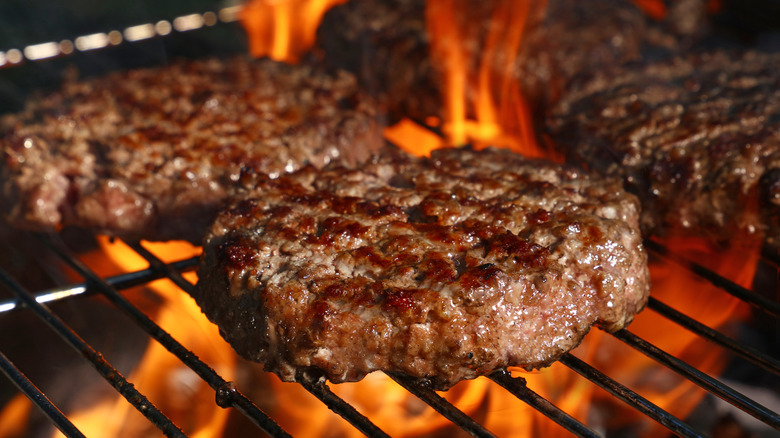
1. Selecting the Right Buns:
Start by choosing high-quality burger buns that are sturdy enough to hold up to the juicy burger patties and toppings. Brioche, potato, sesame seed, or whole wheat buns are popular options, each offering its own unique flavor and texture. Consider the flavor profile of your burgers and toppings when selecting the buns to ensure they complement each other well.
2. Preparing the Buns:
Before toasting, slice the burger buns in half horizontally using a sharp knife. For a uniform and attractive presentation, try to cut the buns as evenly as possible. If desired, lightly brush the cut sides of the buns with melted butter, olive oil, or mayonnaise to add extra flavor and help achieve a golden-brown crust during toasting.
3. Heating the Grill:
Preheat your grill to medium heat or prepare a grill pan on the stovetop. Aim for a moderate heat level to ensure the buns toast evenly without burning. If using a charcoal grill, wait until the coals have reached the desired temperature before placing the buns on the grill.
4. Toasting the Buns:
Place the cut sides of the buns directly onto the grill grates or grill pan. Press down gently with a spatula to ensure even contact with the heat source. Toast the buns for 1 to 2 minutes, or until they develop a golden-brown crust and become slightly crispy. Keep a close eye on the buns to prevent them from burning, as they can toast quickly.
5. Checking for Doneness:
To ensure that the buns are toasted to perfection, lift them gently with a spatula to check for even browning on the underside. The toasted side should be golden brown and crisp, with no signs of burning or charring. Once both sides are toasted to your liking, remove the buns from the grill and transfer them to a serving plate.
6. Serving Suggestions:
Serve the toasted buns immediately as the base for your delicious burgers. The crunchy exterior and soft interior of the buns provide the perfect contrast to the juicy burger patties and flavorful toppings. For added convenience, you can prepare the toasted buns in advance and keep them warm in a low oven until ready to assemble the burgers.
Building the Perfect Burger
:max_bytes(150000):strip_icc()/Next-Level-Turkey-Burgers-with-Lemon-Aioli-FT-recipe0719-b512f54f918a4364b5fc6c64873d0885.jpg)
1. Choosing the Right Toppings:
Start by selecting high-quality toppings that complement the flavor of the burger patties. Traditional options like lettuce, tomato, onion, and pickles are classic choices that add freshness and crunch to the burger. Consider incorporating additional toppings such as cheese, bacon, avocado, or caramelized onions for added flavor and indulgence.
2. Layering for Maximum Flavor:
The order in which you layer the toppings can greatly impact the overall taste and texture of the burger. Start by placing condiments like ketchup, mustard, or mayonnaise directly on the bottom bun to create a flavor base. Next, add lettuce leaves followed by tomato slices to add freshness and moisture. Place the burger patty on top, followed by any additional toppings such as cheese, bacon, or avocado. Finish with the top bun, pressing down gently to secure all the layers together.
3. Experimenting with Flavor Combinations:
Don’t be afraid to get creative with your burger toppings and experiment with different flavor combinations. Try pairing bold flavors like blue cheese and caramelized onions or sweet and savory combinations like pineapple and teriyaki sauce. Consider the overall flavor profile of your burger and toppings to ensure they complement each other harmoniously.
4. Paying Attention to Texture:
In addition to flavor, texture plays a crucial role in building the perfect burger. Aim to incorporate a balance of textures, such as crisp lettuce, juicy tomato, and crunchy pickles, to create a satisfying eating experience. Consider adding contrasting textures like creamy avocado or crispy bacon to enhance the overall enjoyment of the burger.
5. Customizing to Preference:
Building the perfect burger is a highly personal endeavor, and everyone has their own preferences when it comes to toppings and condiments. Encourage your guests to customize their burgers to their liking by setting up a build-your-own burger station with a variety of toppings and sauces to choose from. This allows everyone to create a burger that suits their individual tastes and preferences.
6. Serving with Sides:
Complete your burger experience by serving it with delicious side dishes that complement the flavors of the burger. Classic options like French fries, sweet potato fries, or onion rings are popular choices that pair well with burgers. Alternatively, opt for lighter sides like coleslaw, potato salad, or grilled vegetables for a healthier alternative.
Serving Suggestions
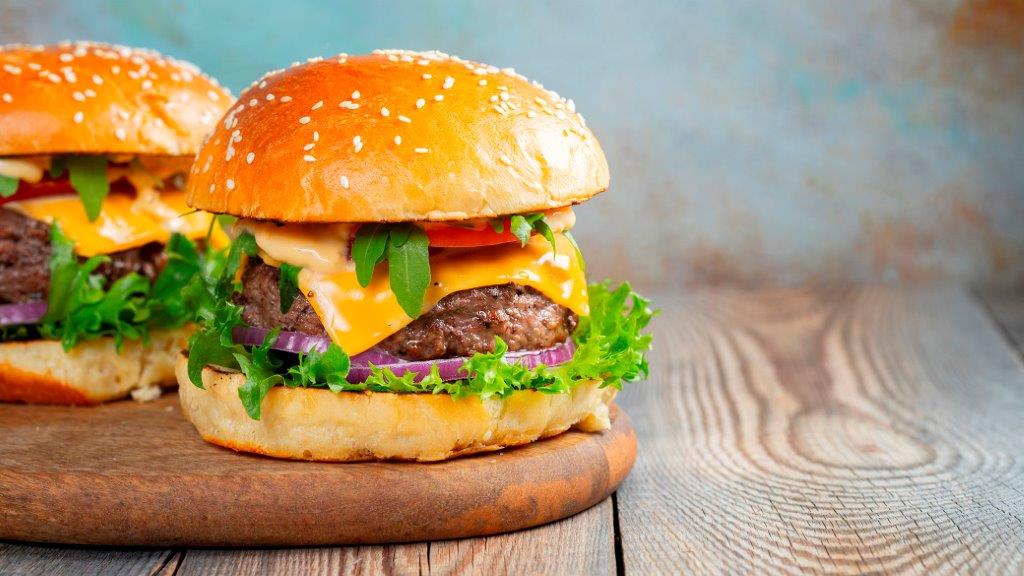
1. Pairing with Sides:
Choose side dishes that complement the flavors of the burger and provide variety to the meal. Classic options like French fries, sweet potato fries, or onion rings offer a satisfying crunch and pair well with the savory flavors of the burger. For a healthier alternative, consider serving grilled vegetables, a side salad, or coleslaw to add freshness and balance to the meal.
2. Exploring Flavor Combinations:
Experiment with flavor combinations that complement the burger’s taste profile. Consider serving sides with dipping sauces or condiments that enhance the flavors of the burger. For example, pair sweet potato fries with a tangy aioli or serve onion rings with a spicy chipotle dipping sauce for added depth of flavor.
3. Offering Variety:
Cater to different tastes and dietary preferences by offering a variety of side dish options. Include options for vegetarians or vegans, such as grilled portobello mushrooms, veggie skewers, or a quinoa salad. This ensures that all guests can enjoy a satisfying meal alongside their burgers.
4. Enhancing Presentation:
Pay attention to presentation when serving side dishes alongside the burgers. Arrange the sides in attractive serving platters or bowls and garnish with fresh herbs or citrus zest for a pop of color and flavor. Consider serving individual portions of sides for a more elegant presentation, especially for formal gatherings or dinner parties.
5. Beverage Pairings:
Choose beverages that complement the flavors of the burger and side dishes. Classic options like soda, iced tea, or lemonade are refreshing choices that pair well with the savory flavors of the meal. For a more elevated dining experience, consider serving craft beers, wine, or cocktails that enhance the flavors of the burger and sides.
6. Considering Dietary Restrictions:
Be mindful of any dietary restrictions or allergies when planning the serving suggestions. Offer alternative side dish options that cater to specific dietary needs, such as gluten-free or dairy-free alternatives. Label dishes clearly to indicate any allergens or dietary restrictions, ensuring that all guests can enjoy the meal safely.
Conclusion
Grilling the perfect burger is an art form that requires patience, skill, and attention to detail. By following the techniques and tips outlined in this guide, you’ll be well on your way to becoming a master of the grill. So fire up those coals, gather your favorite toppings, and get ready to savor the deliciousness of a homemade burger done right. Your taste buds will thank you!

